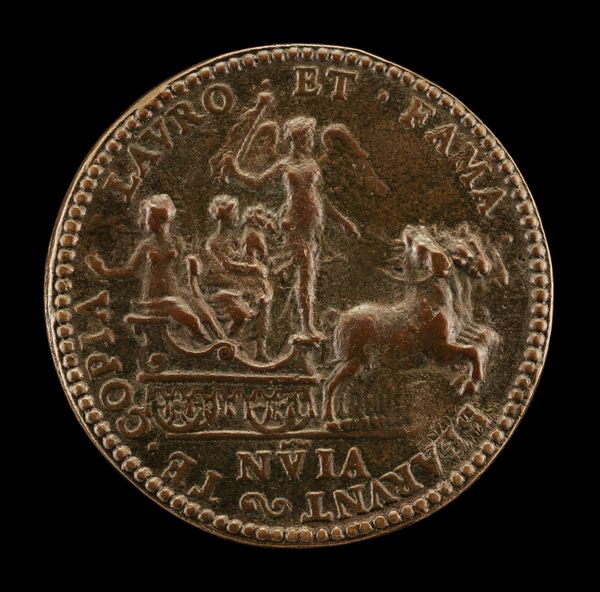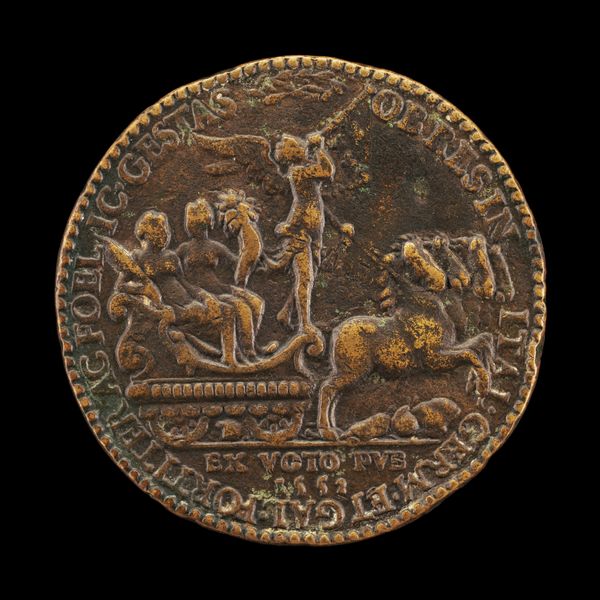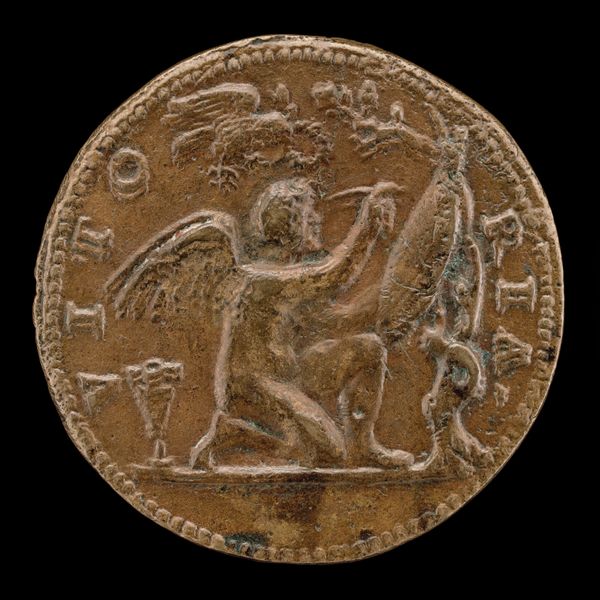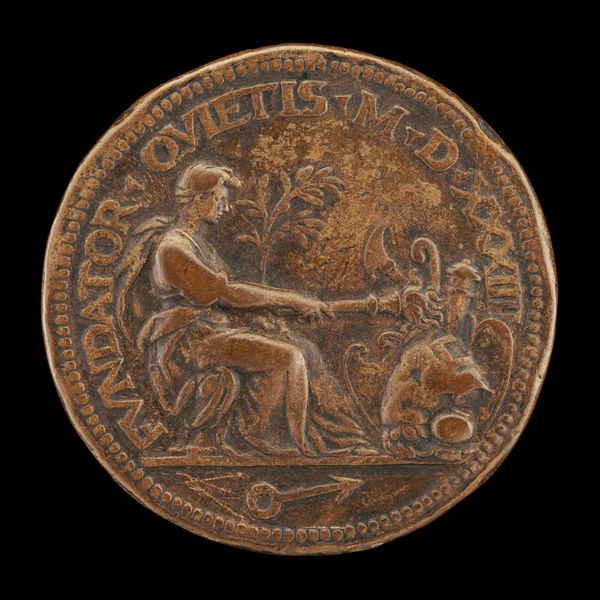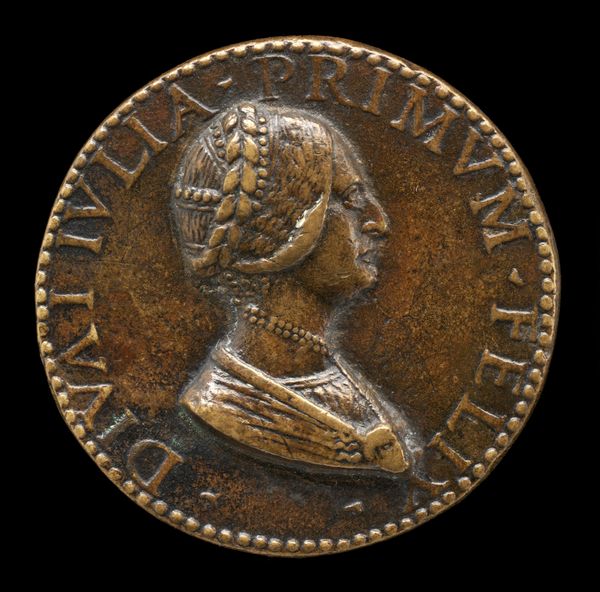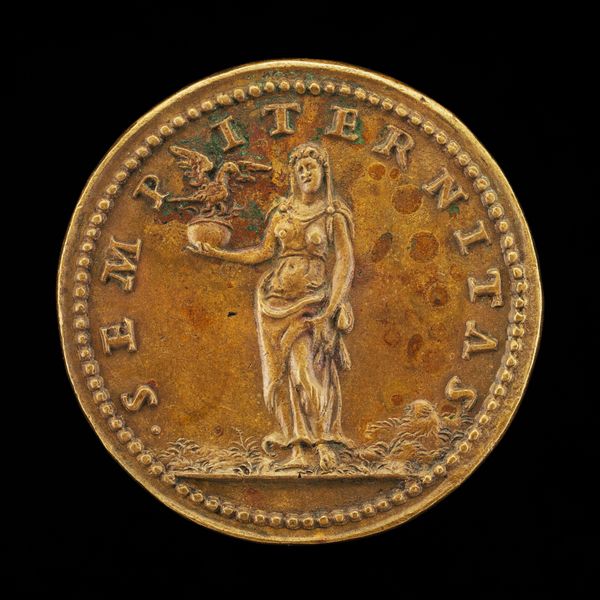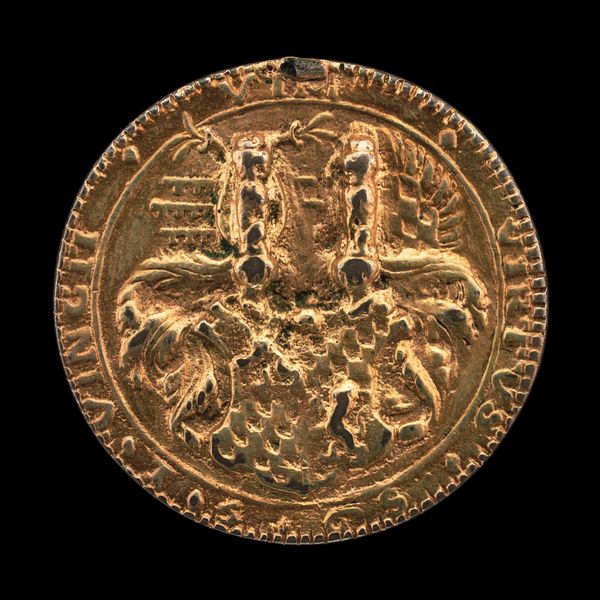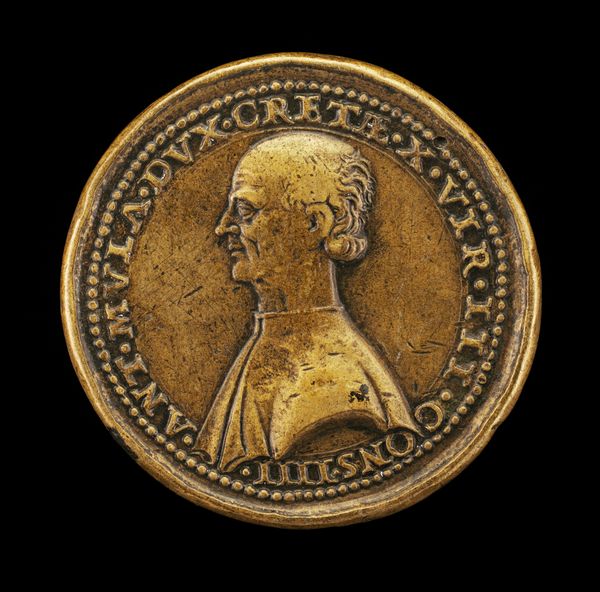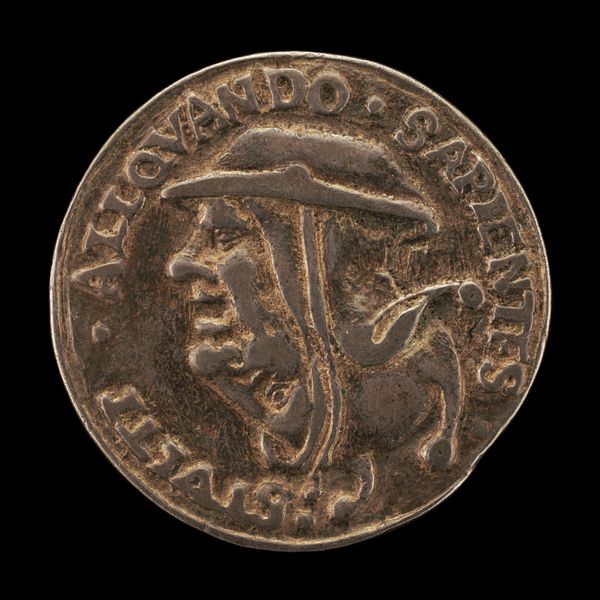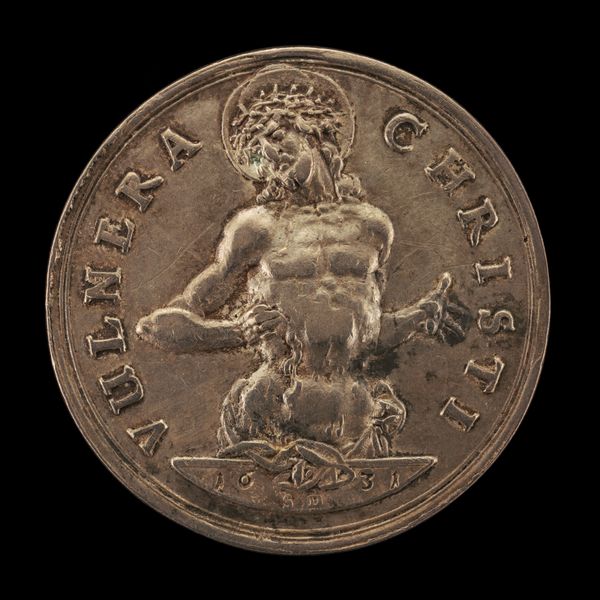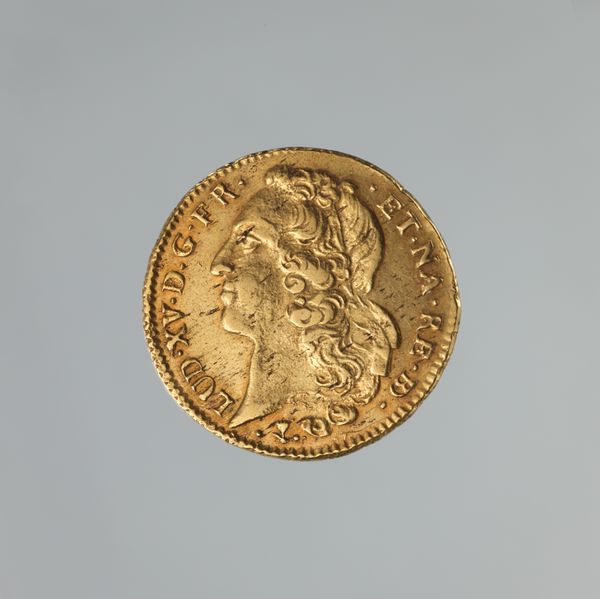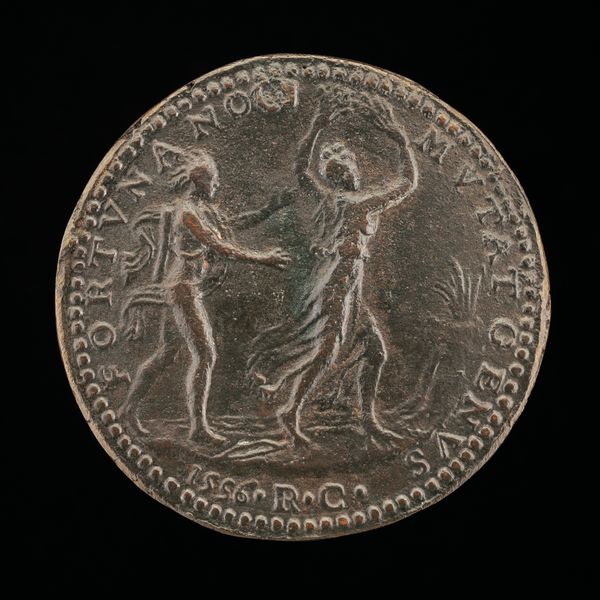![Trampling on Cupid [reverse] by Anonymous](/_next/image?url=https%3A%2F%2Fd2w8kbdekdi1gv.cloudfront.net%2FeyJidWNrZXQiOiAiYXJ0ZXJhLWltYWdlcy1idWNrZXQiLCAia2V5IjogImFydHdvcmtzLzAwNjBlMmNkLWZkMjQtNGVhNy1iMjkyLTVhNmNjNDgxOGUyYS8wMDYwZTJjZC1mZDI0LTRlYTctYjI5Mi01YTZjYzQ4MThlMmFfZnVsbC5qcGciLCAiZWRpdHMiOiB7InJlc2l6ZSI6IHsid2lkdGgiOiAxOTIwLCAiaGVpZ2h0IjogMTkyMCwgImZpdCI6ICJpbnNpZGUifX19&w=3840&q=75)
bronze, sculpture
#
sculpture
#
bronze
#
figuration
#
11_renaissance
#
sculpture
#
history-painting
#
italian-renaissance
Dimensions: overall (diameter): 5.31 cm (2 1/16 in.) gross weight: 49.05 gr (0.108 lb.) axis: 12:00
Copyright: National Gallery of Art: CC0 1.0
Curator: Oh, I find this piece endlessly fascinating. We're looking at "Trampling on Cupid," a bronze sculpture, actually a medal, created around 1525 by an anonymous artist, possibly in Italy. Isn’t that astonishing? It's practically a tiny theatre of defiance. Editor: Defiance is the word! The pose...that goddess dominating little Cupid. I feel like there's something almost confrontational about her energy, doesn't she remind you of a woman taking charge of her life and passions. Like a woman deciding she will no longer be slave to the whimsical, and often, hurtful heart? Curator: Absolutely. Notice the way she holds the bow, not ready to shoot. It is not an expression of aggression, but of liberation. There’s a deliberate inversion of roles here; a Renaissance power play perhaps, where female agency rises above traditional allegorical representations. Editor: The surrounding Latin inscription… “OMNIA.VINCIT. AMOR"...or "Love conquers all." The bitter irony! She really is stomping all over that cliche. Cupid is properly devastated too. Poor kid looks like he's having a rather bad day. Curator: Well, exactly! In a world obsessed with symbolism, this medal acts almost as a statement against easy sentimentality, or at least, a re-evaluation of its supposed universal power. Do you not find something terribly courageous in how unconventional it is? Editor: Courageous indeed, considering the artistic climate of the time. And also clever, playing with the inscription that surrounds the subject matter, almost turning the entire medal into an ironic piece of work...It’s a brilliant commentary on power and control, but also the illusion of what power and control looks like in one's private life. The patina, after all these centuries, actually lends a melancholy feel to the piece. Curator: It truly does. What strikes me most is the sheer boldness, a statement piece worn, perhaps, as an assertion of autonomy, maybe even a private rebellion manifested in public view. Editor: And to imagine it's survived this long; that bronze is witness to such a story and time gone by is deeply evocative. Thanks, Anonymous artist.
Comments
No comments
Be the first to comment and join the conversation on the ultimate creative platform.
